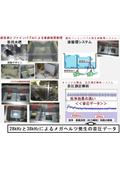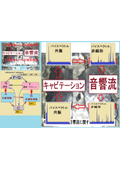Ultrasonic control technology through the installation method of ultrasonic transducers — technology for fixing vibrating objects.
The Ultrasonic System Research Institute has developed a new technology for controlling standing waves through the installation method of ultrasonic transducers, enabling the control of cavitation and acceleration (acoustic flow) effects.
With this technology, it is possible to stir, atomize, clean, and modify liquids ranging from 300 to 6000 liters, which require a large amount of energy.
- Application examples of the developed technology -
Stirring and dispersing nano-level catalysts in solvents (stirring and dispersing carbon nanotubes in plating solutions and paints).
Achieving appropriate ultrasonic irradiation for cleaning targets with varying adhesion strengths due to multiple contaminants, or for surface modification of complex-shaped parts.
The most effective examples include surface modification of metal and resin parts and materials (relaxation of residual stress).
Ultrasonic propagation characteristics:
1) Detection of vibration modes (changes in autocorrelation)
2) Detection of nonlinear phenomena (changes in bispectrum)
3) Detection of response characteristics (analysis of impulse response)
4) Detection of interactions (analysis of power contribution rates)


Inquiry about this news
Contact Us Online
Related Documents
Related product
Related catalog(13)
































